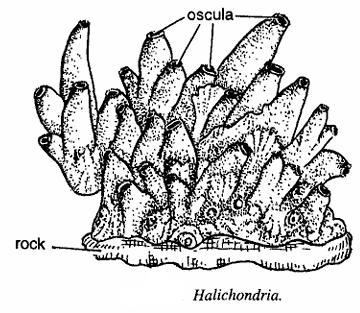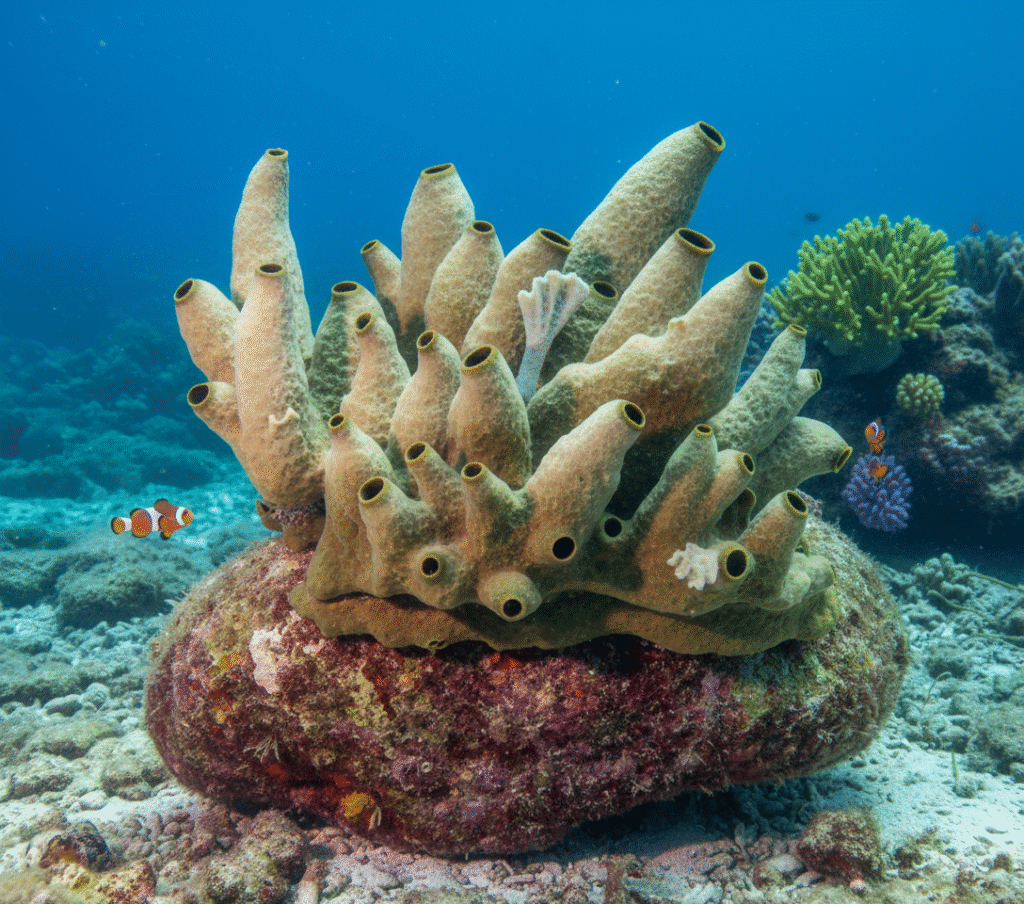Classification of Halichondria
- Phylum: Porifera (Pore-bearing animals with cellular organization and asymmetrical or radial body plans)
- Class: Demospongiae (Sponges with skeletons made of spongin fibers and siliceous spicules)
- Order: Suberitida (Massive or encrusting sponges with typically simple canal systems)
- Family: Halichondriidae (Soft-textured sponges, many of which are polymorphic and robust)
- Genus: Halichondria
Halichondria is a widespread and often variable genus of marine sponges best known for its adaptability and diverse forms. The species Halichondria panicea is especially prominent among the intertidal and subtidal habitats of northern seas.

Habit and Habitat
Halichondria species form amorphous or crust-like colonies on rocky substrates, large boulders, kelp stipes, shells, and sometimes on artificial structures. They thrive in a range of marine habitats—from intertidal rock pools and shaded overhangs to deep-water environments down to at least 550 meters. These sponges tolerate wave exposure, variable salinity, and sedimentation, occurring in estuaries, harbors, and even on fouled surfaces.
Geographical Distribution
Halichondria, especially Halichondria panicea, is found extensively along the North Atlantic coasts—from the Arctic through the North Sea and Mediterranean, and also in sheltered and exposed sites of the British Isles and western Europe. Its cosmopolitan nature means it can also be found in distant temperate and even cold-water coasts globally.
General Characteristics
- Commonly called as crumb of ‘bread sponge’.
- Soft green, brown or yellow coloured.
- Oscula are placed at the top of conical projection of sponge.
- In encrusting kinds, each osculum communicates with the surface and body is vase-shaped.
- In encrusting kinds each osculum communicates with the surface.
- Skeleton consists of irregularly scattered oxeas spicules of several sizes with little or no spongin
- The growth form is highly variable: ranging from thin, encrusting layers to massive, cushion-shaped, or highly lobed/branching forms.
- Sponge surface is typically smooth, often possesses a translucent quality, and can be slightly glassy; oscula (exhalant openings) may be numerous, sometimes raised in small chimneys.
- Coloration is equally diverse: olive-green in sunlit areas (due to symbiotic algae), turning cream, yellow, or beige in shaded or deeper areas and during winter.
- The canal system is leuconoid, aiding efficient water filtration.
- Skeleton is composed of slender, elongated, slightly curved siliceous spicules—no microscleres.
- Possesses a robust and pliable consistency and a distinct smell, often recognized by marine biologists.
- Can grow over a wide variety of surfaces, reflecting its opportunistic ecological strategy.

Special Features
A notable special feature of Halichondria is its adaptability to diverse habitats and ability to change form in response to environmental conditions. Symbiotic algae impart a green color in light-rich environments, improving photosynthetic potential. The species also exhibits viviparity, with larvae having a tuft of long cilia.
Identification
Halichondria identification is secured by its variable shape, smooth or glassy surface, and prominent oscula. In field conditions, the species can often be separated by its smell and, in some cases, the absence of chimney-like oscula (as in H. bowerbanki). Laboratory analysis reveals the presence of typical slender monaxon spicules and lack of microscleres.
References:
- https://en.wikipedia.org/wiki/Halichondria
- http://www.marinespecies.org/porifera/porifera.php?p=sourceget&id=9051
- https://www.marlin.ac.uk/species/detail/1841
- https://www.habitas.org.uk/marinelife/sponge_guide/sponges.asp?item=C4840
- https://www.marlin.ac.uk/species/detail/1407
- https://www.habitas.org.uk/marinelife/species.asp?item=C4840
- https://en.wikipedia.org/wiki/Halichondria_panicea
- https://animalia.bio/halichondria-panicea
